Film Marketing: How to do Marketing Strategy for a Movie
When it comes to film marketing, few companies do it better than the Walt Disney Company.
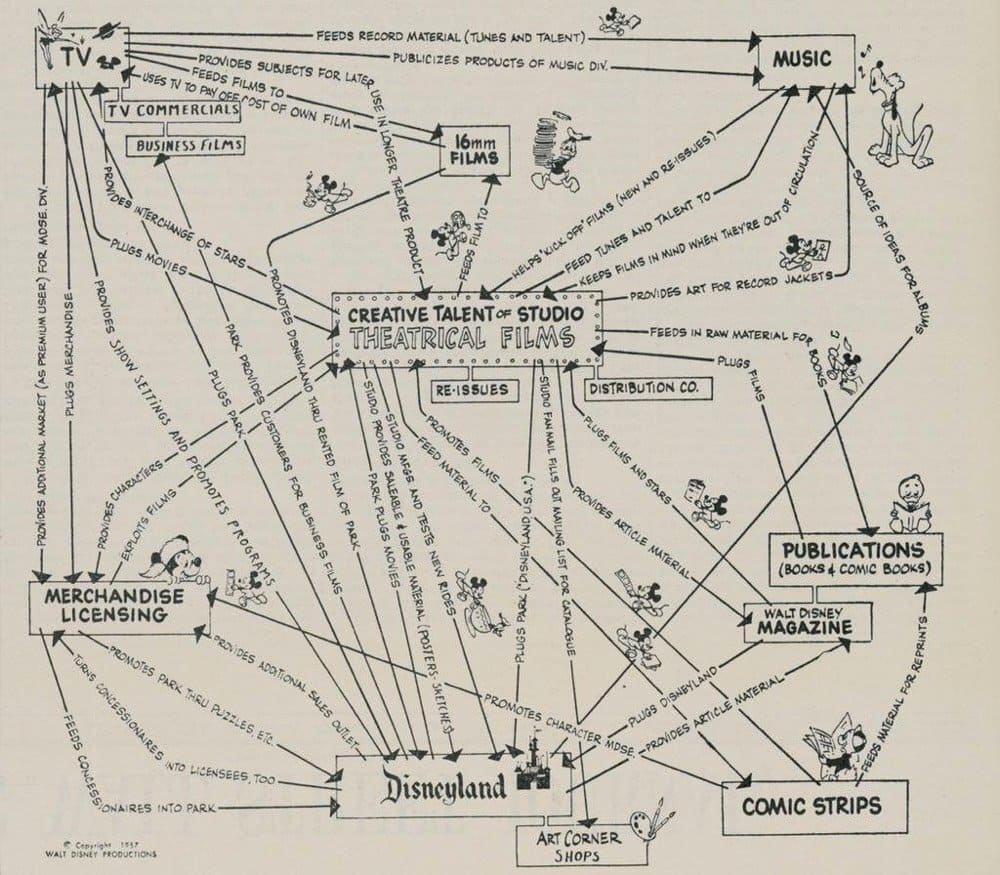
This “synergy” map helped them become a powerhouse in the entertainment industry. They created a cohesive omni-channel brand experience by having their various media outlets, franchises, and properties cross-promote one another: comic strips, film, television, theme parks, resorts, toys, books, games, and music all worked together to promote the artistic visions of Walt Disney.
But what exactly is film marketing, and how do modern companies use similar strategies to sell their movies? In this article, we’ll explore what makes film marketing unique as well as explore some of the best examples of modern marketing.
What is Film Marketing?
Film marketing is a set of strategies and techniques used by studios to promote, build buzz, and engage with audiences. This can include a variety of tactics such as trailer,s posters, press junkets, and more. The advertising landscape is viciously competitive and it’s only through synergizing these strategies that films break above the noise and get noticed.
Why is Film Marketing Important?
Without effective marketing, even the best films may go unnoticed. Building awareness and anticipation is key to strong box office returns.
Plus, marketing shapes public expectations of a film. There are plenty of examples of mismarketed movies that disappointed audiences because they didn’t find what they expected at the theater. It’s the first opportunity the art has to make an impression on audiences. So make it count.
What kinds of marketing are particular to the film industry?
Trailers
Trailers are the essential unique marketing tool in the film industry. No film gets marketed without one.
One of the key benefits of trailers, in the context of Walt Disney’s synergy strategy, is their versatility. They can be shown in theaters, TV, and repurposed for a slew of social media channels. Not only that but they can even be designed and repurposed to appeal to different audiences.
They’re more than marketing tools too. By testing different cuts of a trailer with an audience, studios can gather valuable feedback on the marketability of a film and even effect changes to the movie itself.
Posters
Posters are just behind trailers in the list of essential marketing tools. Easier said than done, but a poster can sell a movie with a single photo: tone, style, and key themes all condensed into a single image.
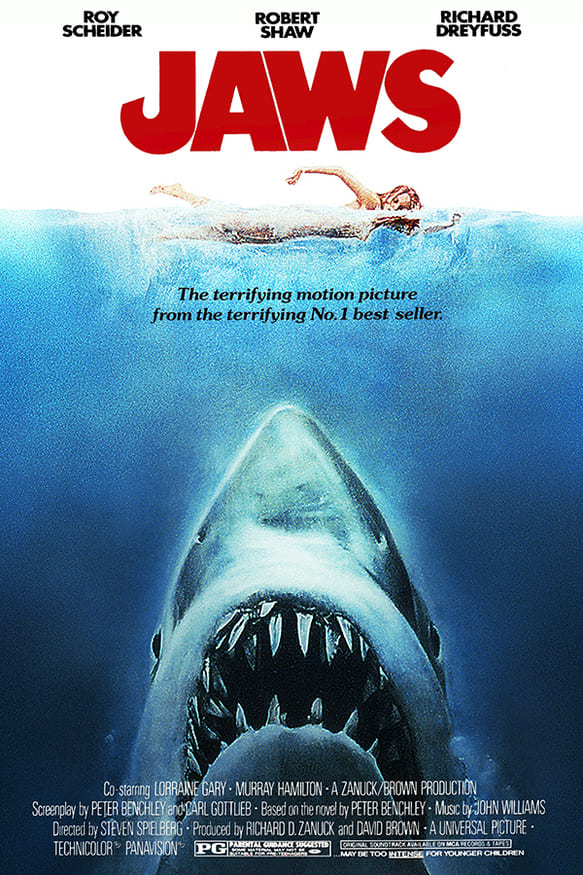
Remember this? I’ll bet you do.
The Jaws poster was a key element in the film’s marketing strategy, helping to generate buzz and anticipation for its release. Its success demonstrates the unique power of posters in the film industry. A well-designed poster captures the attention of audiences in a split second: on a passing billboard on the highway, or in the windows of a movie theater as you walk by.
A good poster can create an instant emotional connection and Jaws delivered.
Press junkets
A press junket is a series of interviews with key members of the cast and crew, often conducted in a sprint over just a few days, used to create news stories, features, and other content to share with their synergizing marketing channels. By bringing together a large number of journalists and influencers, studios can reach a diverse audience.
They aren’t easy to fake, though.
Junkets can sometimes kill buzz for movies as well, as with 2016’s Suicide Squad or 2015’s Fantastic Four. During these junkets, actors were vocal about their dissatisfaction with the film and marketing buzz died alongside their criticisms.
Examples of brilliant film marketing
The Blair Witch Project
This is one of the most innovative marketing campaigns in film history.
Their style of marketing relied on viral and word-of-mouth buzz. The filmmakers created a fake documentary-style website for the film, including fabricated news reports, police reports, and interviews with the film’s characters. The website was designed to make viewers believe that the film was a real-life documentary about a group of student filmmaker who disappeared while filming a documentary about a local legend: the “Blair Witch.”
From fake missing posters to mailing copies of the film with no context or explanation, the marketing paid off. A movie that cost only $60,000 to create went on to gross $248 million worldwide.
The Dark Knight
This campaign followed directly in the footsteps of Walt Disney.
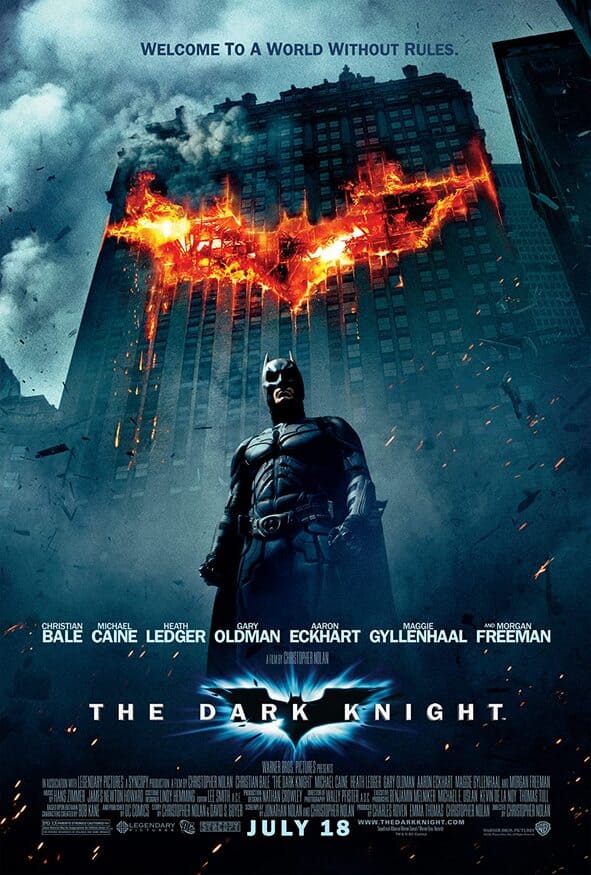
It begins with a teaser trailer released in theaters but also included a hidden message leading fans to a website for Harvey Dent’s fictional campaign for district attorney. This, followed by a series of clues and puzzles released through billboards, websites, and even scavenger hunts, built the initial buzz.
It was a masterclass in viral marketing.
And it worked. The Dark Knight grossed over $1 billion worldwide and was praised for both its box office success and artistic performances of its cast.
The Matrix
“What is the Matrix?” was asked across all forms of marketing material from posters, trailers, and TV spots.
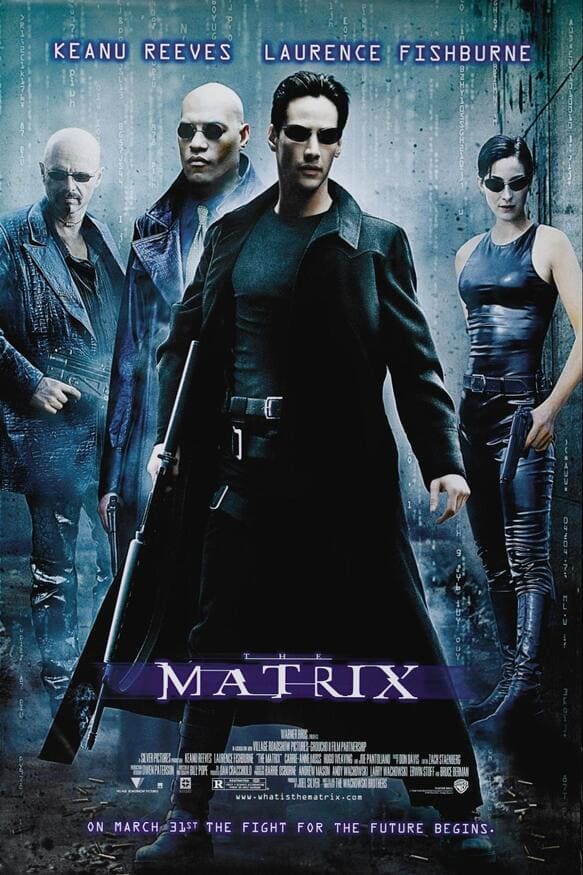
In addition to these traditional marketing methods, the team also created a series of interactive online experiences that were ahead of their time. These included a series of animated short films called “The Animatrix”, which expanded the film’s mythology, and a groundbreaking website that allowed users to explore the world of the Matrix in detail.
The Matrix’s marketing campaign was incredibly successful, helping the film to become a massive cultural phenomenon and gross over $460 million worldwide. The film’s distinctive style and innovative marketing approach helped it to stand out in a crowded market and cemented its place as a classic of the science fiction genre.
The Hunger Games
This film franchise engaged with fans in new ways. They recognized their fan base for the books was passionate and engaged, and they wanted to create a campaign that would tap into that energy and excitement.
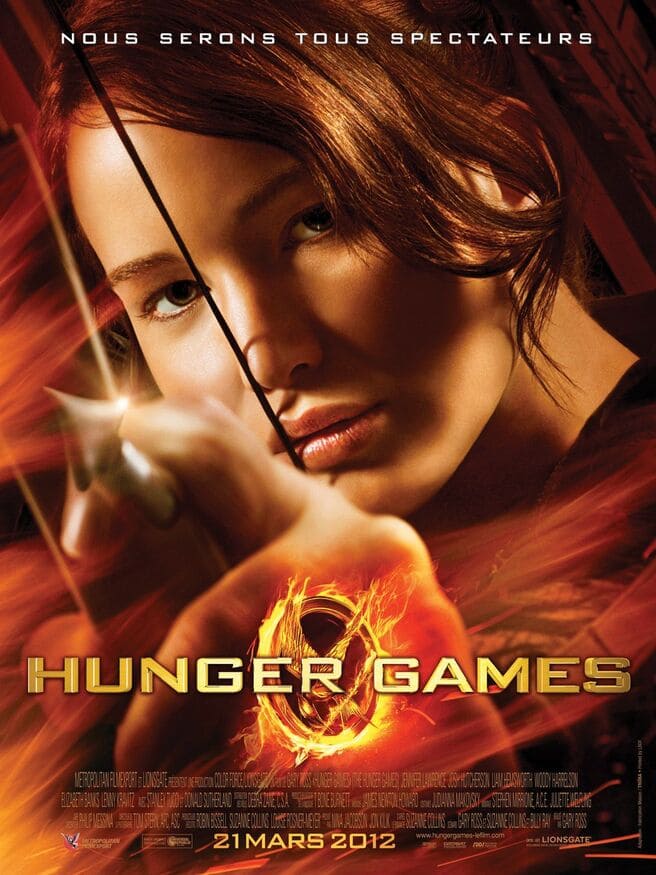
One of the most viral aspects of their marketing was a series of videos designed to look like propaganda pieces from the dystopian world of Panem. In addition to this, they used both traditional and digital channels, trailers, posters, and social media to encourage fans to participate in upcoming challenges.
Tie-ins with other brands proved a key element as well. The film partnered with CoverGirl to release a line of makeup inspired by the film as well as Subway to produce themed sandwiches.
Through these efforts, Lionsgate embodied the Walt Disney synergy approach to film marketing as well.
Conclusion
From trailers and posters to press junkets and social media, there are a wide range of marketing channels film studios use. Effective marketing can differentiate a film from its competitors, establish unique selling points, and create buzz. Marketing is essential to box office success.